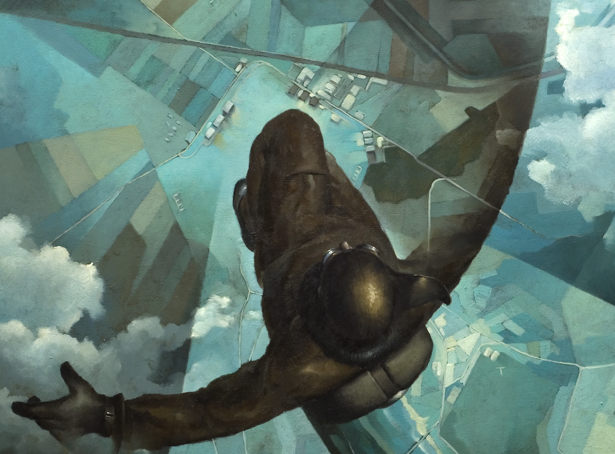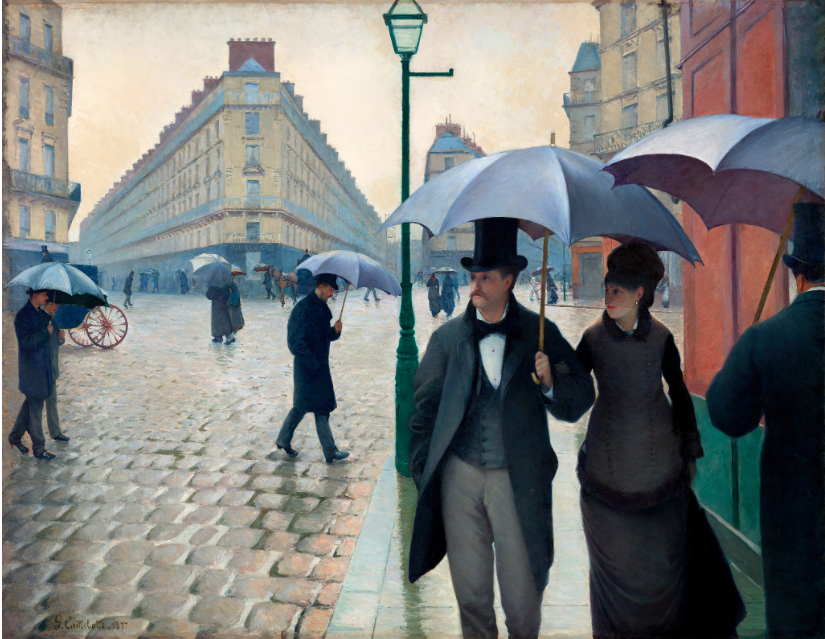
No perspective is so unmistakably modern as the view from above.
It’s pools and baseball diamonds shrinking out the window during the Pan Am’s ascent. It’s film from spy satellites, it’s regional agricultural surveys, it’s Wish You Were Here! postcards. It’s what an I.C.B.M. sees as it careens back to the surface.
And no one is happier to remind you of the view-from-above’s modernity than modern artists. It’s the star of Italian Futurism’s speed-blurred Vatican and the fascist paratroopers. It constitutes exactly half the premise of Charles and Ray Eames’s Powers of Ten. It’s Google Maps.
But not all views-from-above are associated with air travel. One of them surprised me this weekend. The National Gallery of Art here in D.C. is in the final days—literally, the show closes on Sunday—of its retrospective of the French Impressionist Gustave Caillebotte. Caillebotte isn’t as familiar a name as Monet or Renior, though he befriended and bankrolled both of those men and many of their peers. Yet you might know his work: Caillebotte’s most famous painting, Paris Street; Rainy Day, usually hangs as a showpiece at the Art Institute of Chicago. Rainy Day serves as a good ambassador for his work, really, with its odd perspective, aura of solitary strangeness, and tension between the drizzly, chilly world without and the warm bodies within. I’m writing about The Social Network for the Culture section right now, and that film’s opening sequence—a young, single man jogging through a damp and lamplit Boston—could have been shot in Caillebotte’s Paris.

The exhibit focuses on Caillebotte’s work from 1875 to 1882, when he lived in and depicted Paris. Maybe it’s because his style adheres more to realism, or because I’m not used to views of people just being people in the city, but one of his paintings stunned me. It’s Boulevard Seen From Above, from 1880.

This is a view from above, but it’s not the hyper-industrial one we’re used to, the perspective of jets, rockets, and gods. It’s the view of someone leaning out their apartment window in mid-morning, maybe holding a cup of coffee or their iPhone. People are still bundled below, but the leaves are green, so it’s spring, maybe, or late September. An aluminum grate supports the young gingko. There’s a park bench. The world goes on, but not in a bustling or cacophonous way. It’s not rush hour.
It’s trite to look at a painting and remark that it looks like an Instagram—yet this one does. Its luxuries are those afforded to an ordinary person—a tree to admire, the morning chill, some elevation from the din—and its twinges, too, are ordinary. The viewer lives in a city, amid many others like them, and though they may be able to look out across its streets now, soon they will have to get dressed, walk downstairs, pass by the park bench, and become one more dark figure on the sidewalk.